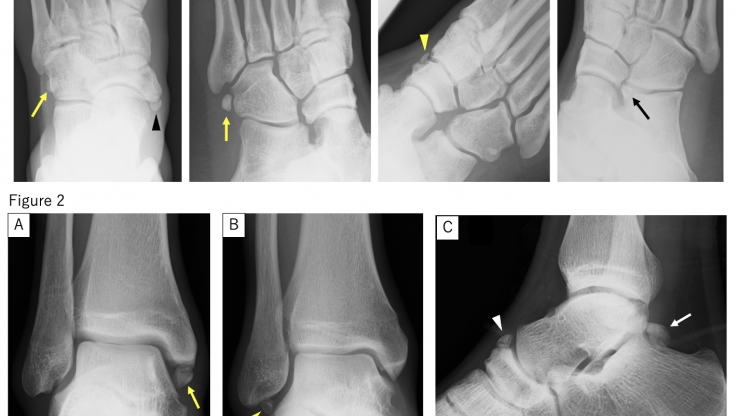Description
Objectives: Accessory ossicles are caused by failure of fusion of secondary ossification centers and may be more likely to occur due to heavy loading in the growth period or improper treatment after injury. We hypothesized that professional soccer players who have been playing soccer since childhood, which places a high burden on the foot and ankle, would have a higher incidence of accessory ossicles around the foot and ankle. The purpose of this study was to investigate the incidence of foot and ankle accessory ossicles in male professional soccer players.
Methods: This study was approved by the hospital ethics committee and internal review board of our institution. This study included male professional soccer players who underwent a medical checkups at our hospital between 2017 and 2023 as the soccer group. The medical checkups included bilateral anteroposterior and oblique foot and bilateral anteroposterior and lateral ankle radiographs. The male patients with matched the age of the soccer group who visited our hospital and underwent anteroposterior and oblique foot or anteroposterior and lateral ankle radiographs were included in the control group. The incidence rate of accessory ossicles was investigated and compared between the soccer group and the control group. Statistical analysis: Pearson’s Chi-squared test was used to evaluate between-group differences in the incidence of different accessory ossicles. Statistical significance was set at a P <0.05.
Results: 276 ankles and 276 feet in the soccer group and 121 ankles and 79 feet in the control group were included in this study. The mean age of the soccer group was 23.6 years (range, 16-38 years) and the mean age of those in the control group who underwent foot radiographs was 24.2 years (range, 16-34 years), and the mean age of those who underwent ankle radiographs was 24.3 years (range, 16-35 years). The mean age to begin soccer in the soccer group was 6.3 years old. The incidence of accessory ossicles in the soccer group and the control group was as follows: accessory navicular 35.9%, 24% (P=0.049), os peroneum 8.0%, 2.5% (P=0.09), os supranaviculare 7.6%, 1.3% (P=0.039), os infranaviculare 1.4%, 1.3% (P=0.090), os calcaneus secundarius 4.3%, 0% (P=0.059), os vesalianum 0%, 0%, os subfiblare 12.7%, 2.5% (P<0.001), os subtibiale 18.1%, 2.5% (P=0.001), os trigonum 89%, 24% (P<0.001). The representative images of accessory ossicles were shown in Figure 1 and 2.
Conclusions: Male professional soccer players had a higher incidence of accessory navicular, and os supranaviculare, os subfiblare, os subtibiale and os trigonum.




